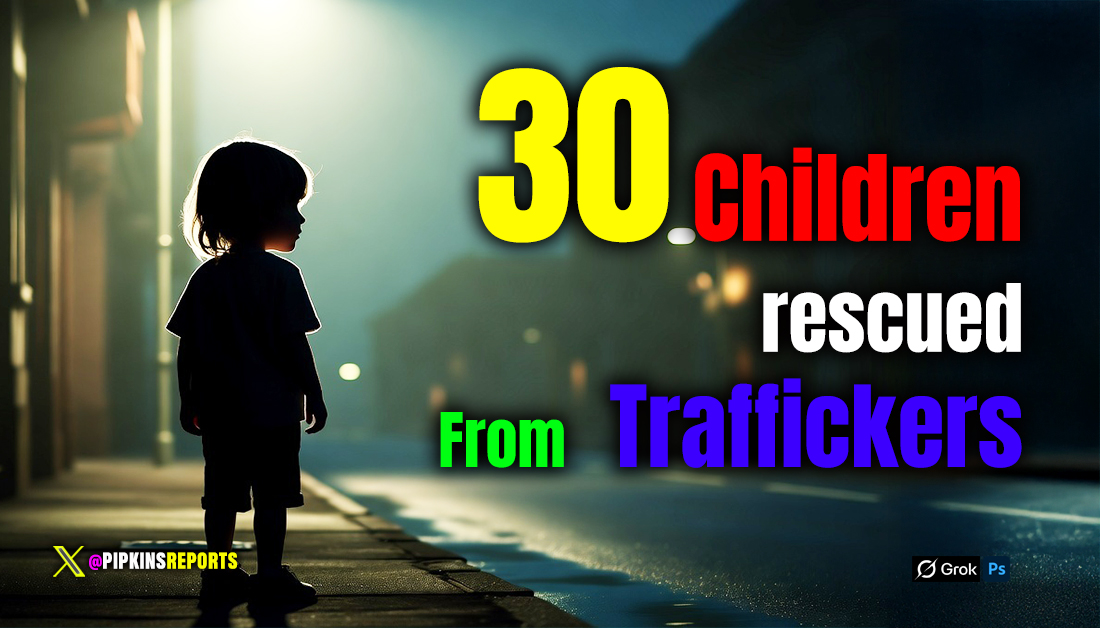
Decoding “Affordable Housing”: Unveiling the Political Manipulation of a Loaded Term
Politicians use the vagaries of “affordable housing” to manipulate the public. Here’s how.
In the realm of political discourse, few phrases carry as much weight as “affordable housing.” These two words are laden with the promise of alleviating a growing societal concern – the lack of access to reasonably priced housing for all. However, lurking beneath the surface of this seemingly benign phrase is a web of interpretations and assumptions that serves as a potent tool for political manipulation. It’s a term that seems to garner consensus, but often hides a divisive agenda that can have far-reaching consequences.
The Illusion of Consensus
The phrase “affordable housing” is a masterstroke in political rhetoric. At first glance, it appears to convey a straightforward and universally accepted concept – homes that are within the financial reach of the average citizen. But the real challenge lies in defining what “affordable” truly means in a world of varying incomes, economic circumstances, and living standards. This ambiguity is where the manipulation begins.
Political actors capitalize on the public’s yearning for affordable housing, leveraging its inherent vagueness to gain support for policies that may not align with the public’s actual desires. In doing so, they exploit the gaps in understanding between different sections of the population, leading to a false sense of agreement while pushing forward their own agendas.
The Interpretation Spectrum
The brilliance of the term “affordable housing” lies in its ability to mean different things to different people. For a low-income family struggling to make ends meet, it might mean subsidized housing with rents well below market rates. For a middle-class professional, it could signify moderately priced housing in well-located neighborhoods. And for a real estate developer, it might mean the relaxation of zoning laws to encourage greater housing density.
These diverse interpretations allow political figures to gather support from various segments of society, each believing that the policy in question aligns with their own definition of affordable housing. This diversity of meanings fosters a facade of agreement, as individuals rally behind the term without fully comprehending the nuances of the policies they are endorsing.
The Mirage of Agreement
The public’s tendency to assume that everyone else agrees on the definition of “affordable housing” further plays into the hands of politicians. This collective assumption of consensus suppresses meaningful debate, as individuals hesitate to question a concept that appears to be universally understood. Thus, political manipulation thrives in an environment where the actual implications of policies are seldom scrutinized.
In reality, individuals might be unwittingly supporting policies that don’t resonate with their true beliefs. For instance, a citizen concerned about preserving their neighborhood’s character might support an affordable housing initiative, unaware that it could lead to increased housing density and alter the very fabric of their community. By exploiting this gap between perception and reality, politicians can advance agendas that might otherwise be met with resistance.
Housing Density: The Hidden Agenda
One of the most insidious ways in which the term “affordable housing” is manipulated is through the push for greater housing density. While this approach might be perceived as a solution to rising housing costs, it often leads to unintended consequences such as overburdened infrastructure, reduced green spaces, altered neighborhood dynamics, increased traffic and more taxes … to pay for the growth.
In the pursuit of densification, politicians use the banner of affordable housing to garner support, masking the true motivations behind their policies. By focusing on the apparent benefits of increased density, such as reduced commute times and decreased urban sprawl, they divert attention from the potential downsides. In this way, they exploit the public’s genuine concerns while pursuing an agenda that might not align with the broader interests of the community.
The term “affordable housing” exemplifies the subtle power of political manipulation. Its inherent ambiguity allows for diverse interpretations, fostering a superficial consensus that masks the true intentions of those who wield it. This manipulation is most evident in the push for greater housing density, where political figures can exploit the public’s desire for affordable living arrangements while sidestepping discussions about the broader impacts of their policies.
Hitting us at Home
In fact, this manipulation hits home more than ever as it unfolds in real-time. The citizens of Fate, TX, find themselves entangled in a web of political maneuvering orchestrated by none other than their own Mayor, David Billings. As he advocates for higher density and multifamily projects under the guise of “affordable housing,” it becomes clear that his motivations might extend beyond the well-being of the community he serves. Instead, he seems to be pursuing personal gains, aligning himself with political allies and furthering his own career. All one needs to do is follow his LinkedIn profile and you will find dozens of reposts for “Strong Towns”, a leftist run organization who’s goal is the urbanization of rural america.
In this context, the citizens of Fate must be vigilant and informed. It’s imperative that they take a proactive stance, demanding transparency and posing direct and difficult questions regarding Mayor Billings’ motivations. The future of their community depends on their ability to see through the veil of rhetoric and unveil the true intentions behind his actions.
Furthermore, as elections loom on the horizon, the citizens of Fate must not allow Mayor Billings to run unopposed. The power of democracy lies in the ability to present alternatives, to question incumbents, and to ensure that public officeholders are held accountable for their decisions. By actively participating in the electoral process, citizens can foster an environment where political manipulation is challenged and where the genuine concerns of the community take precedence.
In conclusion, the term “affordable housing” stands as a testament to the nuanced art of political manipulation. The public’s diverse interpretations of the phrase create an illusion of consensus, allowing politicians to further their own agendas under the guise of addressing a critical societal issue. As exemplified by the actions of Mayor David Billings in Fate, TX, this manipulation is not a distant concept, but a reality that demands vigilant citizens. By asking the tough questions, demanding transparency, and actively participating in the electoral process, the citizens of Fate can steer their community towards a future shaped by genuine concern and true representation.

Fate, TX
Developers, Builders, and Political Insiders Fuel “Vote Yes for Rockwall ISD” PAC

Rockwall, TX – When money talks, it doesn’t whisper — and in Rockwall, it’s shouting from billboards, mailers, and TV ads. Behind the polished “Vote Yes for Rockwall ISD” campaign urging residents to support the district’s VATRE (Voter-Approved Tax Rate Election) lies a familiar cast of Texas developers, contractors, and political insiders — all with deep pockets and deeper interests in keeping the district spending big.
While the PAC’s glossy flyers and heartfelt slogans suggest it’s a grassroots movement of teachers and parents “standing up for students,” the campaign finance records tell a much different story. In reality, the PAC was created, funded, and operated by people who stand to gain financially from Rockwall ISD’s continued expansion.
A PAC Built by Developers, For Developers
The Vote Yes for Rockwall ISD PAC was born on August 19, 2025. That same day, it received its first $10,000 — seed money courtesy of Meredith and Ryan Joyce, owners of a land development consulting firm that works with both commercial and residential projects across Texas.
It was an auspicious start — and a revealing one. The Joyces’ business depends on district growth: more schools, more infrastructure, more construction. In short, higher taxes mean higher contracts.
A few weeks later, the second $10,000 came rolling in from Terra Manna, LLC, a real estate development and land management company led by Bobby Harrell and Bret Pedigo. Terra Manna specializes in large-scale residential projects — the very sort of developments that flood school districts with new students and new tax demands.
Then came another $10,000 from Northstar Builders Group, a firm specializing in — of all things — school construction and development. The irony practically writes itself.
If the VATRE passes, Rockwall ISD keeps spending, schools keep expanding, and developers keep building. It’s a self-perpetuating cycle of “growth” — for them.
The Builders’ Ball: Who Really Funds “Vote Yes”?
The PAC’s donor list reads less like a community support roster and more like a who’s who of Texas construction and development.
At the top tier:
- Joeris General Contractors, LLC – $5,000
- Z Constructors Nationwide – $5,000
- Matt Zahm (Z Constructors) – $5,000 (personally)
- RPRE, LLC – $3,500 (real estate brokerage and development firm)
These are not concerned citizens hoping to keep classrooms funded — these are professionals whose livelihoods are directly tied to district spending and capital projects.
Add to that a lineup of $2,500 donors, including:
- Chris Harp Construction
- Satterfield & Pontikes Construction, Inc.
- Glenn Partners (Architectural Firm)
- Billy & Julie Burton (private)
Then there’s the $2,273 in-kind donation from State Representative Justin Holland and his wife, Neely, for what they listed as “hats.”
$2,273 worth of hats? That’s either a new fashion trend in political branding — or a convenient way to funnel campaign merchandise under the radar. Holland, a familiar name in local politics, has long been an ally of the developer class, and his support here fits neatly into the pattern.
Other mid-level donors include Jason Volk Consulting, Noelle Fontes, and Brian Berry at $2,000 apiece.
At the $1,500 mark, the donor pool widens to include Elite Landscaping, PCI Construction, Skorburg Company, and Hanby Insurance, LLC — all companies that directly benefit from ongoing construction and development contracts in fast-growing communities like Rockwall.
Follow the Money — and the Math
In total, the PAC has reported $96,068 in contributions. But here’s the number that matters: $89,273 — or 93% — came from developers, builders, and real estate professionals.
The PAC’s promotional materials claim they’re “standing with teachers.” Yet only about 8% of all donations — under $1,000 each — came from teachers or district employees.
In other words, the people being used as the public face of this campaign are the least financially involved in it.
The illusion of grassroots support masks what is, in fact, a highly coordinated and well-funded lobbying effort — one aimed at convincing taxpayers to fund the very projects that enrich the PAC’s donors.
Big Money, Bigger Ads
The spending patterns are just as revealing. Since August, Vote Yes for Rockwall ISD has spent more than $27,000 on flyers and mailers, $9,000 on billboards, and even $3,000 on television ads — a heavy push for a local tax election.
They’ve also purchased $1,250 in ad space in Blue Ribbon News, the same publication that ran a “news article” touting the VATRE’s supposed benefits. The placement wasn’t coincidental — it was strategic.
And then there’s the expense that raised more than a few eyebrows: a $435.40 reimbursement to Meredith Joyce for “Car Polish Supplies.”
Car polish. From the same person who donated $10,000 in seed money.
One has to wonder what, exactly, was being polished — the campaign’s image, or something a bit shinier?
The Real Stakeholders: Not the Kids, Not the Teachers
Let’s be honest: when developers and construction firms pour nearly six figures into a local tax election, it’s not out of civic virtue or classroom compassion. It’s because they see a return on investment.
Every new bond, every tax hike, every “yes” vote translates into another round of district-funded construction — and another series of lucrative contracts.
Meanwhile, teachers — the supposed heart of the movement — are relegated to bit players. Their donations are symbolic at best, swallowed up in a sea of developer dollars.
Even worse, the campaign’s slick messaging exploits their image. Smiling teachers in front of whiteboards, holding “Support Our Schools” signs, while the fine print reads like a blueprint for cronyism.
Political Influence Runs Deep
The fingerprints of political insiders like Rep. Justin Holland only reinforce the perception that this isn’t about education — it’s about influence.
By lending his name (and hats) to the campaign, Holland helps cloak the PAC’s true motives under a veneer of community support. But his connections to the donor class are no secret.
When state legislators, developers, and contractors align to push a local tax increase, taxpayers should pause and ask: Who benefits most from this vote?
Spoiler: it isn’t the students or the teachers.
Manufactured Consent
The “Vote Yes for Rockwall ISD” campaign is a textbook case of manufactured consent. Using big money, polished marketing, and local political connections, the PAC is attempting to sway residents into supporting a measure that serves private interests far more than public good.
It’s the same formula seen across Texas — from bond packages to tax rate elections — where growth and progress are invoked as cover for sweetheart deals and endless construction booms.
Rockwall residents deserve to know who’s funding the message before they cast their ballots.
Because when nearly all the money pushing a tax increase comes from developers, builders, and their political allies, it’s no longer a campaign — it’s an investment.
And like any investment, the people writing the checks expect a return.
Bottom Line:
The Vote Yes for Rockwall ISD PAC isn’t a movement of parents or teachers. It’s a development-driven marketing operation, built to protect the flow of taxpayer money into the hands of builders, consultants, and political allies.
Rockwall voters should take note: when the people who build schools are the loudest voices demanding higher taxes “for the children,” it’s worth asking whether their real concern is education — or their next contract.
Featured
30 Children Saved in Texas Anti-Trafficking Operation

San Antonio, TX – More than 30 missing children were located and recovered during Operation Lightning Bug, a focused law enforcement initiative that stretched from July 28 through August 15. The operation, centered in San Antonio, unveiled not only the scale of child exploitation in the state but also the increasingly urgent role Texas agencies are being forced to play in combating trafficking amid a national border crisis.
The U.S. Marshals Service (USMS), working in concert with the San Antonio Police Department (SAPD) and the Lone Star Fugitive Task Force, spearheaded the mission. In an official release, USMS confirmed that “over 30 missing juveniles” were located, six confirmed trafficking survivors were removed from exploitation, five trafficking investigations were launched, three individuals were arrested for harboring runaways, and nine felony warrants were executed. Additionally, “over 120 missing juveniles [were] encouraged to return home, resulting in cleared entries from state and national databases.”
“The safety of our children is the safety of our communities, and justice demands that we protect those who cannot protect themselves,” said U.S. Marshal Susan Pamerleau for the Western District of Texas. “Through Operation Lightning Bug, we reaffirm our promise to safeguard the most vulnerable and strengthen the safety of our communities.”
SAPD Chief William McManus echoed the urgency behind the operation, stating, “Every suspect arrested, juvenile returned home, and survivor taken out of harm’s way matters. This operation demonstrates what can be achieved when law enforcement agencies unite to protect children.”
A Deliberate Target on Traffickers
Operation Lightning Bug was highly strategic. Teams reviewed every missing juvenile listed in both the Texas Crime Information Center and the National Crime Information Center databases, identifying cases where minors were deemed “at high risk of exploitation by traffickers and predators.” The operation included deputies from USMS offices in San Antonio, Del Rio, Midland, and Pecos, along with specialized SAPD units, including Missing Persons, Special Victims, covert teams, and Street Crimes personnel. Intelligence gathering allowed law enforcement to prioritize the most vulnerable cases and craft operational plans that led to direct recoveries and arrests.
SAPD’s Special Victims Unit interviewed each recovered child to determine whether they had been victimized. Trafficking survivors were immediately connected with Texas Health and Human Services and partner organizations to ensure long-term safety, mental health support, and reintegration assistance.
According to data from the International Center for Missing and Exploited Children, more than 330,000 minors were reported missing in the United States in 2024. While many are found quickly, those who lack stable homes or strong support systems are increasingly being targeted by trafficking rings.
Trafficking Thrives on Instability — and Policy Failure
Kirsta Leeburg Melton, founder and CEO of the Institute to Combat Trafficking, explained to Fox News that “trafficking is the exploitation of men, women and children for forced sex or forced labor by a third party for their profit or gain. That’s been around forever. What hasn’t really been around is people’s understanding of that crime and their knowledge that it’s happening everywhere.”
Melton further noted that traffickers prey on minors with “unstable home lives,” including those suffering from a lack of food, housing, family support, or emotional security. Technology serves as a primary tool for both predators and buyers, giving traffickers a near-invisible reach into vulnerable groups.
The unprecedented influx of undocumented minors during the Biden administration placed child welfare and trafficking oversight systems under intense strain—a crisis Texas law enforcement is still working to contain. By contrast, under President Trump’s term, stricter border enforcement and cartel disruption efforts made it significantly harder for trafficking networks to exploit cross-border routes at scale.
Texas Law Enforcement Takes the Lead
While Washington debates border security and trafficking enforcement in committee rooms, Texas law enforcement agencies continue to operate on the front lines. Operation Lightning Bug not only demonstrated the capability of state and federal joint task forces but also reinforced the necessity of cooperation among local agencies.
The Lone Star Fugitive Task Force, involved in the operation, consists of personnel from SAPD, the Bexar County Sheriff’s Office, Texas DPS, the Texas Attorney General’s Office, Naval Criminal Investigative Service (NCIS), New Braunfels Police Department, Texas Board of Criminal Justice OIG, Bexar County District Attorney’s Office, U.S. Immigration and Customs Enforcement (ICE), and the U.S. Marshals Service.
Under authority granted by the Justice for Victims of Trafficking Act of 2015, the U.S. Marshals Service now has explicit power to intervene in missing child cases regardless of whether a sex offender or fugitive is involved. This expansion allowed USMS to establish the Missing Child Unit, which now collaborates rapidly with nationwide law enforcement partners.
Operation Lightning Bug showed what can happen when that authority is fully exercised. It demonstrated what many Texans already know: when state and local agencies are given the backing, funding, and legal authority to act, children are saved, predators are taken down, and trafficking networks are disrupted—sometimes permanently.
A Crisis That Isn’t Slowing Down
In August, 11 children were reported missing in North Dakota—a state with a population of fewer than one million. Earlier, in June, authorities recovered more than two dozen children in a Florida operation described as a “first-of-its-kind missing child rescue operation.” These numbers indicate a nationwide escalation rather than isolated events.
As Texas continues to serve as a primary trafficking corridor due to its geographic proximity to the border and multiple interstate routes, state officials are increasingly forced to respond where federal leadership has not.
Child trafficking is often framed as a distant, foreign evil—but Operation Lightning Bug makes it clear: the victims live here. They disappear from neighborhoods, schools, shelters, foster systems, and broken homes. They are not statistics; they are Texas children, lost to predators who thrive in moments of policy weakness and exploit institutional gaps.
Texas Fights — Even as the Battle Grows Harder
There is no declared victory here. But there is proof of impact. Thirty children were found. Six survivors of trafficking were brought out of exploitation and into safety. Five new investigations are underway, likely mapping broader criminal networks. Over 120 missing children—some voluntarily gone, some running from abuse—were convinced to return home. Felony suspects are now in custody.
More importantly, the operation forced public attention on a crisis that prefers to operate in the shadows.
Every rescued child represents a life pulled off a path toward trauma, abuse, or death. Every warrant served sends a message that Texas still has teeth in its justice system. And every coordinated effort reminds traffickers that the state is watching.
Operation Lightning Bug is not the end—but it is a bright flash in the dark, signaling that Texas law enforcement is willing to strike, even when others won’t.
Featured
Texas Braces for “No Kings” Protests on October 18 – Areas to Avoid

As Texas gears up for a wave of nationwide “No Kings” protests scheduled for Saturday, October 18, residents in major cities across the state are advised to steer clear of key downtown and civic areas to avoid potential disruptions, traffic snarls, and heightened security measures. The anti-authoritarian demonstrations, organized under the banner of opposing perceived executive overreach by President Donald Trump, are expected to draw crowds echoing the large turnouts seen in June. While organizers promote peaceful assembly, past events have occasionally spilled into street closures and increased police presence.
The “No Kings” movement, which frames itself as a grassroots push against authoritarianism, has ties to left-wing groups including Indivisible and, according to state officials, Antifa networks previously designated as domestic terrorists by President Trump. Protests are slated in at least eight Texas locales, focusing on central hubs like city halls, parks, and capitol grounds. Here’s a rundown of the hot spots to sidestep:
| City | Location/Details | Time Window | Notes |
|---|---|---|---|
| Houston | March from Houston City Hall; Rally at Discovery Green (1500 McKinney St) | Noon–2 p.m. (rally); ~2 p.m. start (march) | Downtown core; expect pedestrian crowds and possible road blocks. |
| Houston (Suburbs) | The Woodlands (Lake Woodlands Dr & Six Pines Dr); La Porte City Hall (604 W Fairmont Pkwy) | 10 a.m.–1 p.m. (The Woodlands); 10 a.m.–Noon (La Porte) | Satellite events in suburban civic spots; lighter traffic but monitor local alerts. |
| San Antonio | Travis Park | 4–6 p.m. | Downtown landmark; anticipate street closures and elevated foot traffic. |
| Dallas | Pacific Plaza (401 N Harwood St) | Noon–3 p.m. | Central business district; business commuters should plan alternate routes. |
| Austin | Meet at Texas State Capitol, march ~1 mile to Auditorium Shores | 2 p.m. start | Traverses downtown; riverfront park finale could draw lingering crowds. |
| Fort Worth | 501 W 7th St | 11 a.m.–3 p.m. | 7th Street corridor in downtown; entertainment district vibe with protest overlay. |
| Arlington | Arlington Sub Courthouse (700 E Abram St) | 10 a.m.–Noon | Civic center area; near courts, potential for quick law enforcement response. |
| Plano | NE corner of Preston & Parker Rd (near Wells Fargo Bank) | 10 a.m.–Noon | Commercial intersection; suburban but busy with shoppers and drivers. |
| Laredo | Jett Bowl North | 10 a.m.–Noon | Local rec landmark; public gathering spot in a border community. |
These sites were compiled from announcements by organizers and local media reports. There will be many more protests in cities of all sizes. Authorities urge the public to check city traffic apps and news updates for real-time detours.
SIDELINE: Abbott Mobilizes Guard and DPS to Safeguard Austin
In a preemptive strike against potential unrest, Governor Greg Abbott has ordered the deployment of the Texas Department of Public Safety (DPS) and the Texas National Guard to Austin, where the democrat run city is expected to be the hub of the most violent and extreme protesters. The move, announced Friday, targets the capital city’s planned march amid concerns over links to Antifa groups, which President Trump recently labeled a domestic terrorist organization.
“Violence and destruction will never be tolerated in Texas,” Abbott stated in a release from his office. The surge includes state troopers, Special Agents, Texas Rangers, aircraft surveillance, and tactical assets, coordinated with the state’s Homeland Security Division to scan for extremist ties. This echoes a similar summer operation around the Capitol during prior demonstrations.
Local law enforcement will collaborate on arrests for any acts of violence or property damage, emphasizing deterrence over confrontation. Austinites near the Capitol or Auditorium Shores should prepare for a visible security footprint.
Behind the scenes, the “No Kings” push has drawn scrutiny for its funding streams, with reports pointing to deep-pocketed backers like George Soros’ Open Society Foundations (nearly $8 million to Indivisible since 2017), the Arabella Advisors network (over $114 million to affiliates from 2019–2023), and billionaire donors such as Hansjörg Wyss and Walmart heiress Christy Walton. While much of this support flows through dark-money channels for broader civic engagement, critics argue it amplifies protest logistics and messaging.
As the sun sets on these gatherings, it’s worth a final nod to the movement’s own rallying cry: There are no kings in America. And Donald Trump doesn’t see himself as one—for if he did, he wouldn’t allow protests like this to occur in the first place. Stay safe, Texas.




You must be logged in to post a comment Login